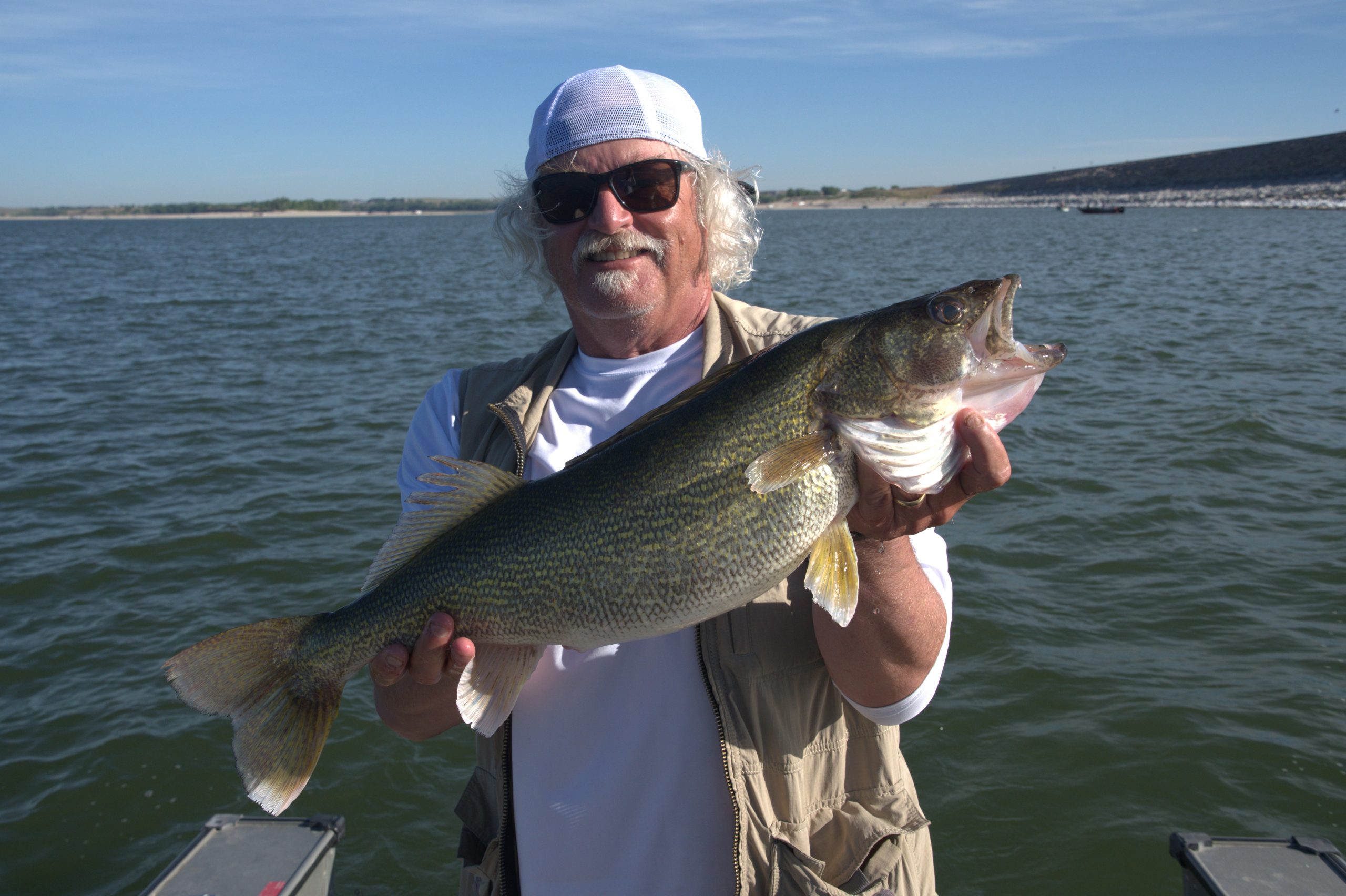
By Julie Geiser
Paragraph copyLake McConaughy is one of the best fisheries in Nebraska for many fish, including wiper, smallmouth bass, channel catfish and, especially, walleye. For the latter, it is considered one of the best in the Midwest. Maintaining the walleye fishery, however, is complicated.
Recruitment is cyclical in most walleye waters, with strong production years often followed by poor ones, and McConaughy is no exception. In Big Mac, anglers have as good of a chance at catching a trophy walleye as anywhere, but in recent years have found fewer 15- to 20-inch fish.
Nebraska Game and Parks Commission is investigating this, and since 2015, fisheries biologists have been working with University of Nebraska at Kearney researchers to find the reason behind low recruitment.
Researchers collected young-of-the-year walleyes between 2015 and 2018 and found that in each of those years, 10 percent or less of the total population was produced naturally. Knowing increasing survival of stocked fish was critical to improving recruitment, the researchers also collected baseline information on predators, zooplankton and water clarity. Combining this information could then be used to develop a map of locations where stocked fish would have the best chance of survival.
In 2017 and 2018, immediately after walleye were stocked, UNK researchers and Game and Parks biologists collected predator fish in areas where walleyes were stocked, as well as elsewhere in the lake, to determine what species were present where. The stomachs of those fish were pumped to determine what they had been eating, and then they were released back into the lake. Researchers found every predator in the lake was feeding on young-of-the-year walleyes, and those fish were most abundant in the middle and lower reaches of the reservoir.
For the second part of the study, researchers focused on what young walleye primarily eat: small, aquatic microorganisms, known as zooplankton. They sampled 48 locations along the north and south shore of McConaughy when walleye were stocked in 2018 and found zooplankton size and availability varied by month and location. This is significant because previous studies have shown fry will select smaller species of zooplankton and fingerlings will select larger ones.
A third piece of the research focused on water clarity, another important factor to walleye fry and fingerling survival based on previous research. Juvenile walleyes prefer depths between 3 and 9 feet where water tends to be more turbid. In these conditions, they can see better than other fish because of their eye structure, and the turbidity can serve as a cover, protecting them from other sight-feeding predators. In 2018, researchers measured water clarity at locations throughout the lake when walleye were stocked. Researchers found the reservoir was more turbid on the west and south ends and clearer to the north and by the dam.
From these findings, researchers produced maps showing which locations had the lowest chance of predation, the most zooplankton, and the optimal water clarity. They then combined these maps to find locations where stocked fish had the best chances of survival.
Game and Parks biologists began using this information in 2022 and also tweaked their stocking protocol. Along with 26 million fry and 1.3 million 1¼-inch fingerlings, they stocked 280,000 1½-inch fingerlings. The latter were stocked at a lower rate in the hatchery ponds and kept there a week longer, allowing them to grow larger. This extra growing time got them closer to the size when they could feed on larval alewife instead of zooplankton, in hopes of increasing their chances of survival.
Biologists used a chemical to mark fry and the larger fingerlings they stocked in 2022. In the fall, they collected 200 of these age-0 fish and examined the otoliths to determine which stocking they came from. That examination of marked fish found the survival of fingerlings to be greater than fry. They are still working to determine the origin of unmarked fish by examining the microchemistry in the otoliths to see if they came from a hatchery or natural reproduction.
With lower reservoir levels, biologists aim to stock 20 million walleye fry, 800,000 1¼-inch fish and 200,000 1¾-inch fish in 2023. Those fish will again be marked, sampled in the fall and analyzed to determine contribution to the fishery. Results of these assessments will guide future stocking practices at the lake.
Researchers also are continuing to explore other pieces of the management puzzle. Knowing zooplankton availability could be affecting survival of stocked walleyes, researchers have been looking into the likely cause of declines: alewife. This forage fish was introduced to the lake in 1986 to supplement the gizzard shad population that tended to be boom or bust. Since their introduction, however, zooplankton levels, especially the larger species important in a young walleye’s diet, have been noticeably lower in the reservoir.
Researchers collected alewife at locations throughout the lake within 48 hours of stocking walleye to determine where they were and what they were eating. They found alewife were feeding almost exclusively on larger zooplankton and not walleye fry, as suspected.
Alewife, however, have proven to be a reliable food source for walleyes, allowing them to grow fast and fat. With populations presently at historically high levels, however, it is likely compounding the zooplankton part of the management equation.
High alewife populations isn’t making things easy on anglers either: with more food than they can possibly eat, the walleye that are swimming in the state’s largest reservoir can be difficult to catch at times.
Biologists hope these research efforts can help identify the stocking regimen that will help increase the number of fish that grow big enough to eat more alewife and tip the scales in favor of fish and anglers alike — keeping Lake Mac at the top of the fisheries list and more fish on the end of an angler’s line.
